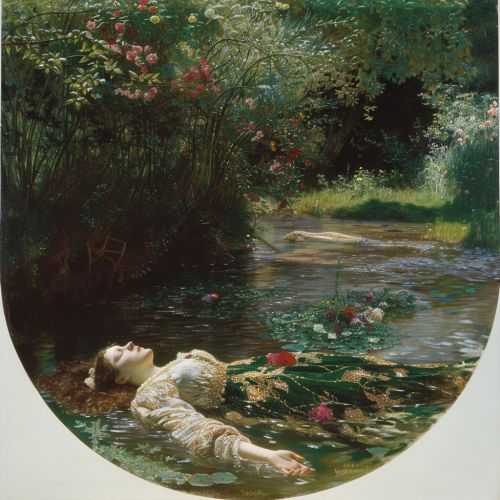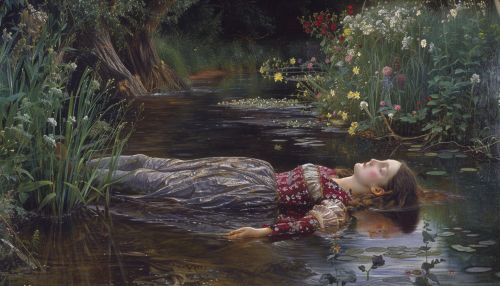John Everett Millais
Early Life and Education
John Everett Millais was born on June 8, 1829, in Southampton, England. He was the youngest of three children in a family of French descent. His father, John William Millais, was a successful businessman, and his mother, Emily Mary Millais, was an amateur artist who encouraged her son's artistic talents from a young age. The family moved to Jersey in the Channel Islands when Millais was a child, and it was here that he first demonstrated his prodigious talent for drawing.
Millais's formal art education began when he was admitted to the Royal Academy of Art in London at the age of eleven, making him the youngest student ever to enter the Academy. His early training at the Academy was rigorous, focusing on classical techniques and the study of Old Masters. Millais quickly distinguished himself as a gifted student, winning several medals and prizes for his work.
Pre-Raphaelite Brotherhood
In 1848, Millais co-founded the Pre-Raphaelite Brotherhood (PRB) along with Dante Gabriel Rossetti and William Holman Hunt. The PRB was a group of young artists who sought to reform the art world by rejecting the academic standards of the time and returning to the detailed, vibrant, and complex compositions of pre-Renaissance art. The Brotherhood's work was characterized by its attention to detail, vivid colors, and complex symbolism.
Millais's early works as a member of the PRB include "Isabella" (1849), "Christ in the House of His Parents" (1850), and "Ophelia" (1851-1852). "Ophelia," in particular, is considered one of his masterpieces and exemplifies the Pre-Raphaelite style with its meticulous attention to natural detail and its rich, luminous color palette.


Artistic Evolution
As Millais's career progressed, his style evolved. By the late 1850s, he began to move away from the strict Pre-Raphaelite style and adopted a more naturalistic approach. This shift is evident in works such as "The Blind Girl" (1856) and "Autumn Leaves" (1856), which, while still detailed and richly colored, exhibit a softer, more atmospheric quality.
Millais's later works often focused on themes of childhood and domestic life. Paintings like "Bubbles" (1886) and "The Boyhood of Raleigh" (1870) reflect his interest in capturing the innocence and simplicity of youth. His ability to depict the subtleties of human emotion and the beauty of everyday life earned him widespread acclaim.
Portraiture and Later Career
In addition to his genre paintings, Millais was a highly sought-after portraitist. He painted numerous portraits of prominent figures, including Thomas Carlyle, John Ruskin, and William Ewart Gladstone. His portraits are noted for their psychological depth and technical precision.
In 1885, Millais was created a baronet, becoming Sir John Everett Millais. In 1896, he was elected President of the Royal Academy, a position he held until his death. His presidency was marked by efforts to modernize the Academy and support young artists.
Personal Life and Legacy
Millais married Effie Gray in 1855, following her annulment from the art critic John Ruskin. The couple had eight children, several of whom also pursued artistic careers. Millais's personal life was marked by his close friendships with other artists and writers, including Charles Dickens and Alfred, Lord Tennyson.
Millais's influence on the art world was profound. His work helped to shape the direction of British art in the 19th century, and his contributions to the Pre-Raphaelite movement continue to be celebrated. His paintings are held in major collections around the world, including the Tate Britain and the National Gallery in London.
